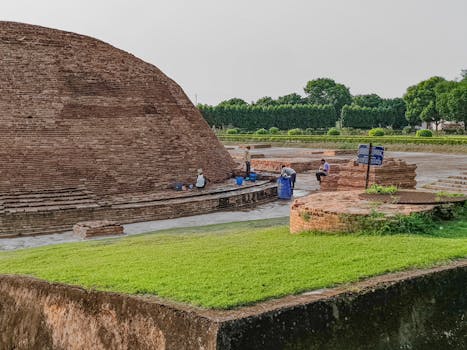
Traveling Through Time: How Europe’s Historical Heritage Shapes Modern Lifestyles in 2025
Introduction to Europe’s Historical Heritage
Traveling Through Time: How Europe’s Historical Heritage Shapes Modern Lifestyles in 2025. Europe, with its vast and diverse history, has always been a fascinating continent to explore. From the ancient civilizations of Greece and Rome to the modern cities of today, Europe’s historical heritage has played a significant role in shaping the modern lifestyles of its inhabitants. In this article, we will delve into the ways in which Europe’s historical heritage continues to influence modern lifestyles, from architecture to cuisine, and explore the significance of preserving cultural heritage for future generations.
The Influence of Historical Architecture on Modern Cities
One of the most visible ways in which Europe’s historical heritage has shaped modern lifestyles is through its architecture. Many of Europe’s cities, such as Paris, Rome, and Barcelona, are filled with historic buildings and landmarks that have been preserved and restored over the centuries. These buildings not only provide a glimpse into the past but also continue to influence the way modern cities are designed and built. For example, the use of arches, columns, and domes in modern architecture is a direct result of the influence of ancient Greek and Roman styles.
The Preservation of Cultural Heritage
The preservation of cultural heritage is essential for maintaining the historical significance of Europe’s landmarks and buildings. Many organizations, such as UNESCO, are working to protect and preserve these sites for future generations. In addition to preserving historical buildings, it is also important to preserve the cultural traditions and customs that are associated with them. This can include traditional music, dance, and cuisine, as well as festivals and celebrations that are unique to each region.
The Impact of Historical Heritage on Modern Cuisine
Europe’s historical heritage has also had a significant impact on modern cuisine. Many of the traditional dishes that are popular today have their roots in historical times. For example, the use of olive oil, garlic, and tomatoes in Mediterranean cuisine is a direct result of the influence of ancient Greek and Roman cooking styles. In addition, the preservation of traditional recipes and cooking methods has helped to maintain the cultural significance of food in modern European society.
Conclusion
In conclusion, Europe’s historical heritage has played a significant role in shaping modern lifestyles, from architecture to cuisine. The preservation of cultural heritage is essential for maintaining the historical significance of Europe’s landmarks and buildings, as well as the cultural traditions and customs that are associated with them. As we look to the future, it is essential that we continue to prioritize the preservation of Europe’s historical heritage, not only for its cultural significance but also for its ability to inspire and educate future generations.






